TRIP REPORT – Land Forces Conference, Sept 2014
Land Forces Conference is the newly renamed Land Warfare Conference which I have attended previously.
It is an opportunity for industry supporting the defence force to showcase their efforts, and allow demonstration some of the other capabilities and toys they have.
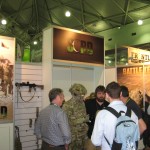
It’s quite a large array of products, services and big boys toys on display in this place. Only some of which include
-
Medical evacuation equipment and patient treatment
-
Combat Engineering, including NBC (detection, protection and decontamination), mobility and explosive ordinance disposal
-
Scientific testing through independent laboratories, engineering non-destructive and destructive testing.
-
Small arms and ammunition
-
Trucks and other B-Vehicles (soft-skinned General Service vehicles)
-
Armoured vehicles (A-Vehicles)
-
Drones and other UAV’s
-
Personal equipment (packs, boots, body armour, webbing, etc.)
-
Logistical support (equipment and expertise)
-
Command and Control (radios, secure communications, and data transference)
There are the really big defence companies, like Thales and BAE, and the really small “mum and dad” companies that provide some really unique capabilities to the ADF.
This year was held in the convention centre in South Brisbane. Due to the vagaries of real life, I was only able to attend one day of the Conference, and missed out on many of the seminars and discussions that is conducted between the government organisations (such as Department of Defence, and the Defence Material Organisation) and industry members.
As such, this will only cover my explorations, observations and interactions on the main floor of the event, dealing with vendors and random encounters.
It was an interesting start to the day, having an angry, mentally unbalanced Butcher Bird swoop me on the way to the train station. Unfortunately, the stupid avian drew blood, and I had to divert into the nearest coffee shop (dripping blood down my chin – much to the horror of the staff) for serviettes and clean-up. What can I say? No chick can resist a Dashing Lighthorseman…
Thankfully, this wasn’t a future portent for the day. I can tell you, I was a little bit paranoid walking into the venue, expecting someone to attack me.
So, some of the companies I happened to call into:
BAE
I’ll start off with one of the biggest corporations attending Land Forces.
It was two years ago in Melbourne at the last Land Warfare Conference that I first met one of the reps. He spotted me wandering around with a lost look on my face this year, and dragged me over for a chin-wag. As a sign of our increasing maturity, we were comparing geek-boy tattoos over a lovely coffee.
In between bouts of proving to the world we were struggling with accepting maturity as grown men with Combat Arms experience and catching up on what’s been happening in our lives, we discussed a little bit of what BAE has been up to lately.
They’ve offered the BV-10 Viking for trials to the ADF.
They’re also offering an upgraded wheeled vehicle based on the MOWAG mounted with the turret from the CV-90 for the Land400 project for the Australian Army. So, in this picture, they are offering the base, wheeled vehicle on the right, fitted with the turret of the tracked vehicle on the left. Should be an interesting vehicle.
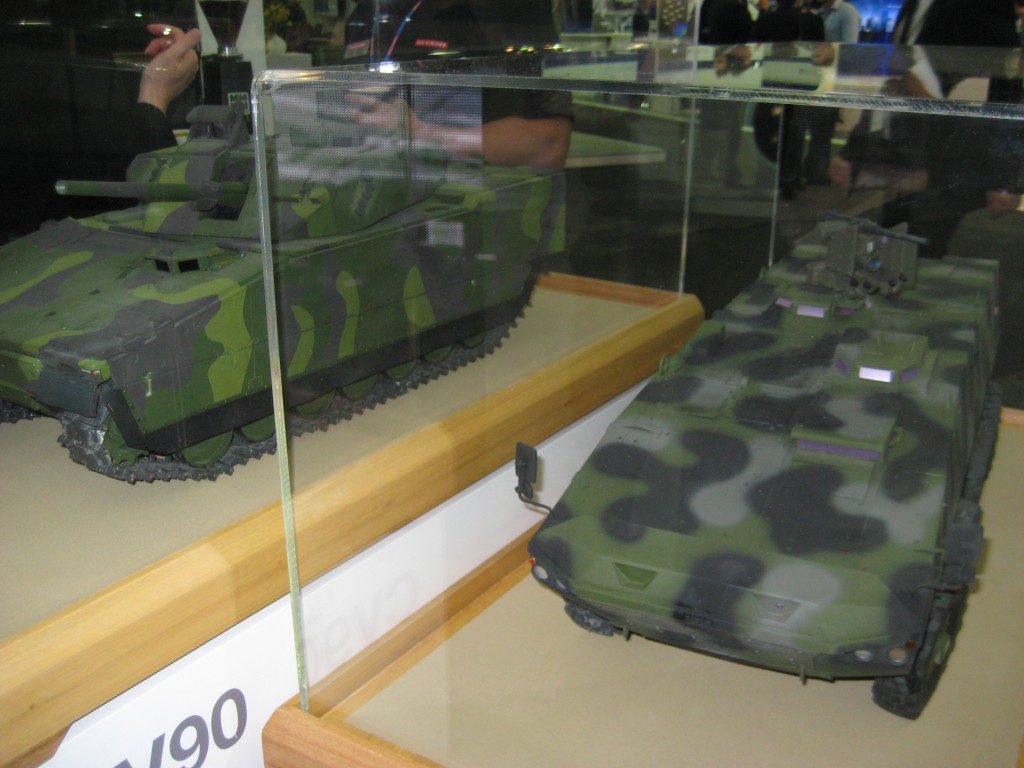
BAE is also offering a an Automatic Grenade Launcher (AGL) in 40mm with attached sensors and aiming devices for an upcoming Australian Army project. I wasn’t able to find out much more than that, we were both more engrossed in more arcane topics.
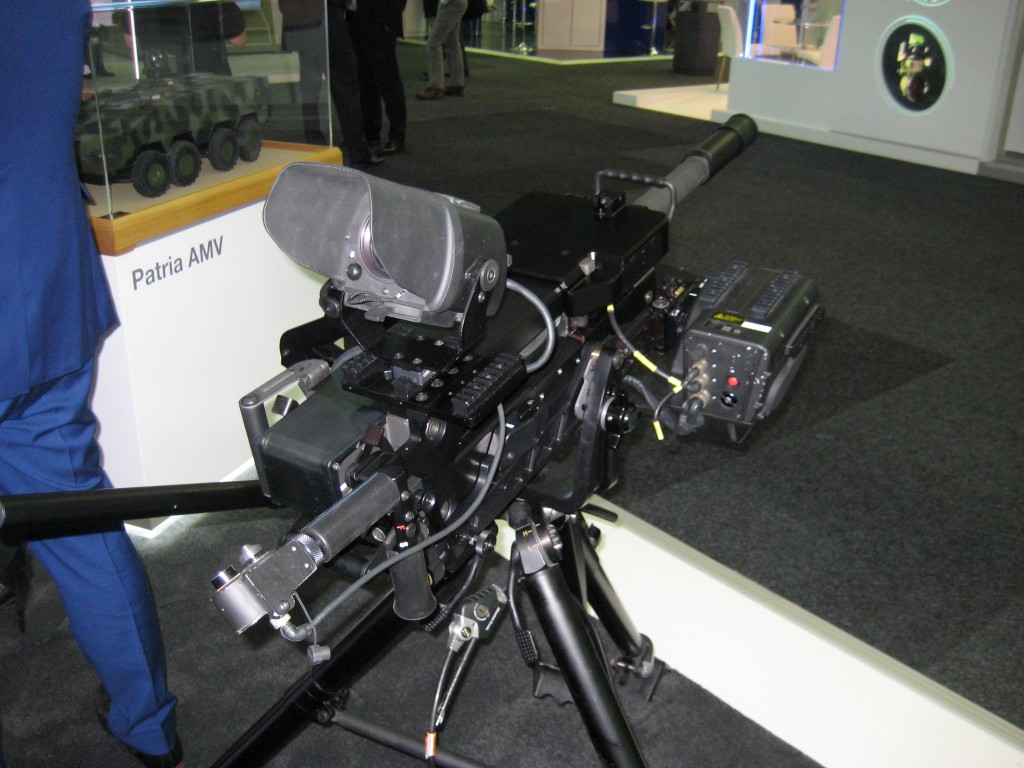
Military Template Technology
On the other end of the scale of Defence suppliers, is Military Template Technology. They’re a small local business based out of Queensland that provides map marking protractors, war fighting symbology stencils, range safety templates, mud model kits and a host of other smaller things that are essential for serving members.
I love their mud map model kit, which is great for issuing orders to troops.

Some of the products MTT had on display were really nice.
For the American market, they offer a protractor for personal navigation purposes that is far more robust than the issue item.
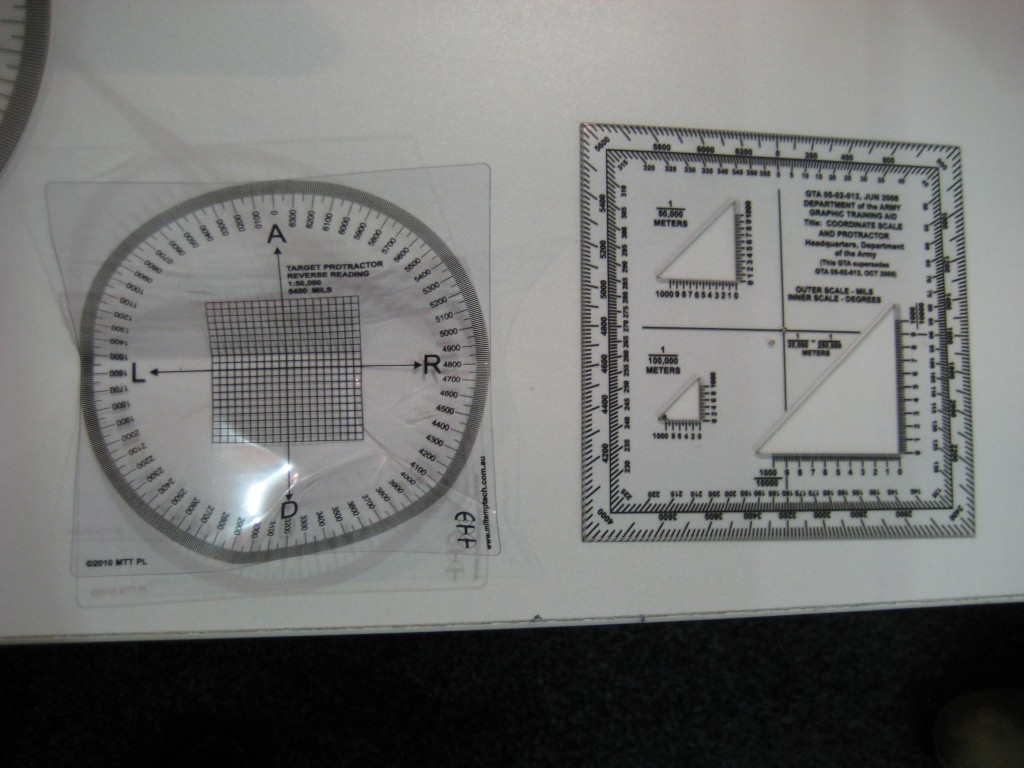
They also offer such things as military war fighting symbology stencils for map marking in several scales. One is nice for personal maps, and another is suitable for wall-mounted maps (such as seen in Command Posts and sub-unit Headquarters).
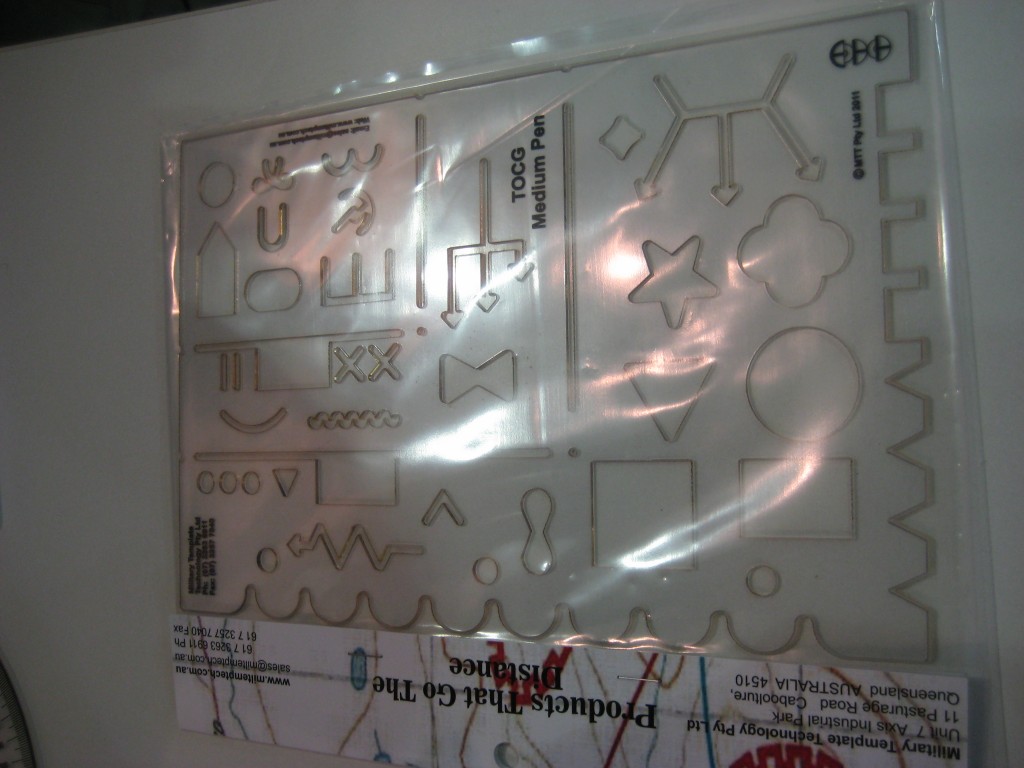
They also offer some really nice training aides for basic marksmanship and applications of fire, that allow sight picture to be more easily trained. Apparently these are now quite popular in our basic training establishment at Kapooka.
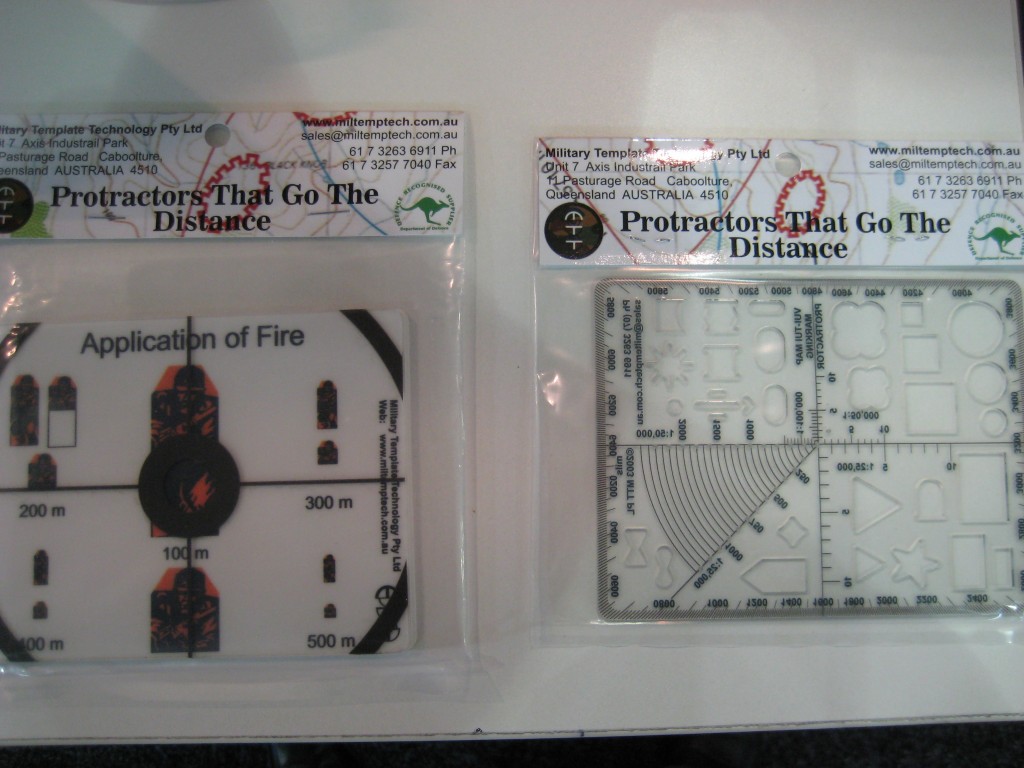
Perhaps their most popular range is the small arms safety templates that allow quick and easy determination and marking of range safety areas. These are done in accordance with ADF and NATO standards, allowing very easy template measurements to be carried out.
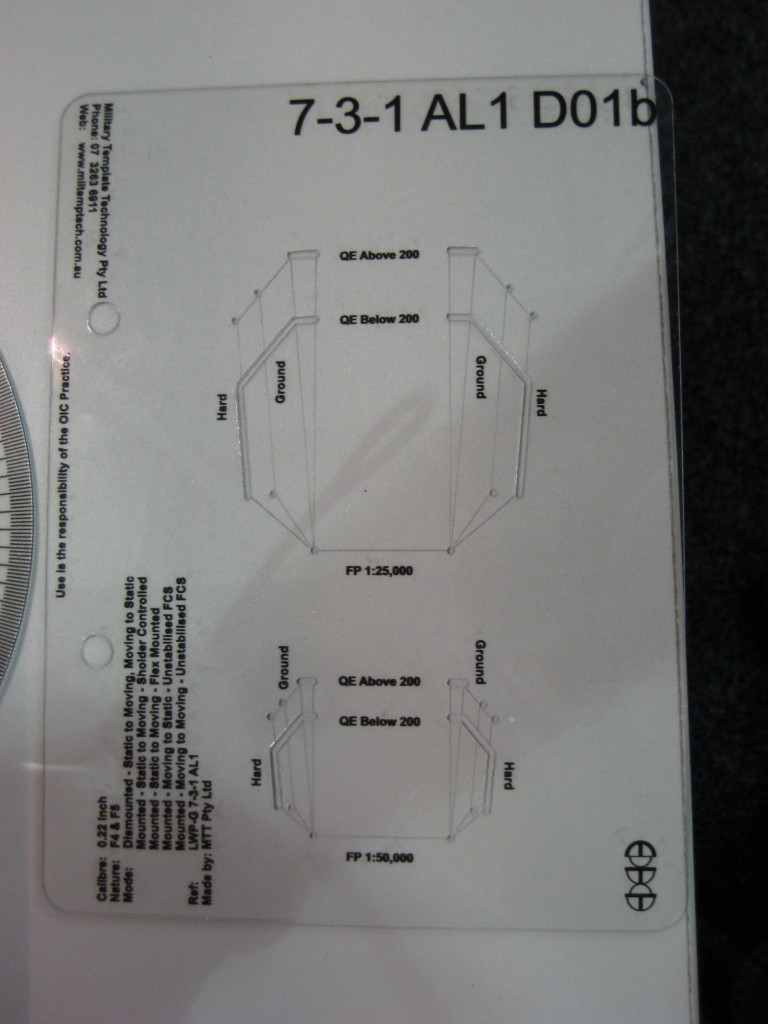
It’s the small things that make life easier for armed professionals.
Military Template Technology can be found at:
http://www.miltemptech.com.au/
So poke your nose in and tell them I sent you.
PLATATAC
It’s lovely to be on speaking terms with all major equipment suppliers in this country.
Opportunity was taken to touch base with the crew at Platatac and see what’s new for them.
They had their Badger ASAD plate carrier on display.

This is a lightweight full MOLLE compatible plate carrier with detachable chest rig. All weighing in at less than 1kg. The use of lightweight material to reduce overall weight of the equipment is impressive. With it’s detachable chest rig/chest plate for carriage of the fighting load, it’s also cross-compatible with every other rig in their range, and other items from partnered companies such as Mayflower and Haley Strategic in the US. Very nice move.
Platatac is also in partnership with the American company Blue Force Gear to use their Helium Whisper technology for pouch attachment. I haven’t had a close look at Helium Whisper before, It’s a nice strong, yet very lightweight material solution to what is traditionally a weighty problem. This technology and partnership should do many good things for Platatac’s pouch line.
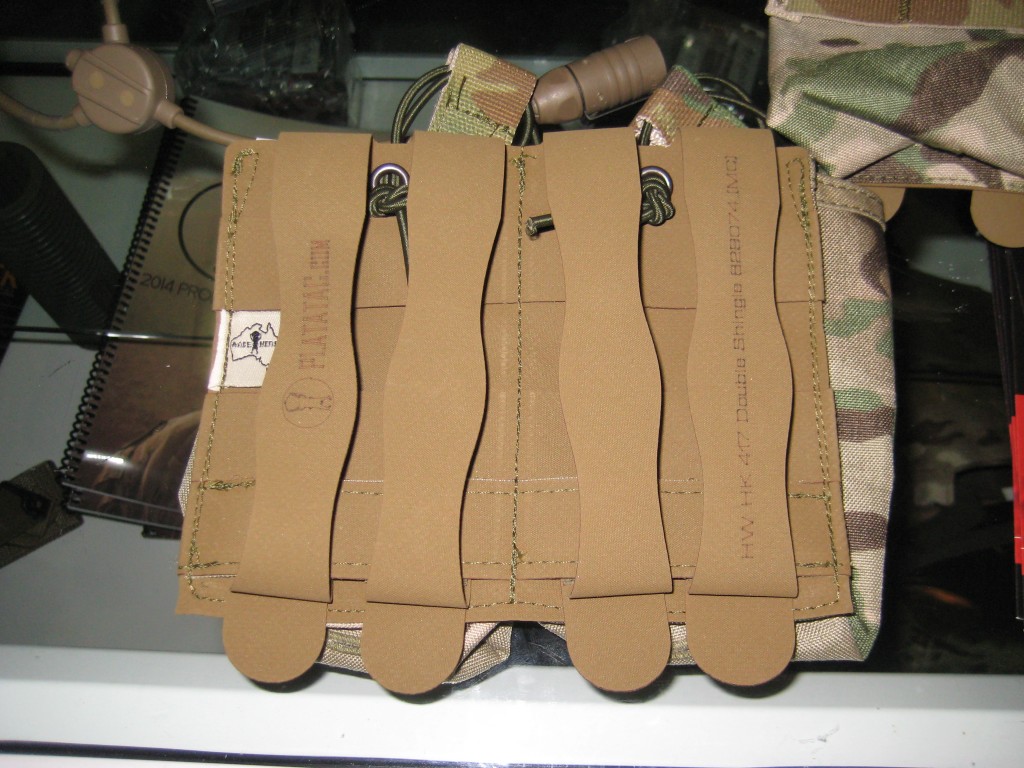
They also showed me some of their concept and prototypes that they’ve been working on. Hopefully, I’ll be able to speak of them at the appropriate time.
TRIJICON
Trijicon has had some significant inroads into Australian service in the last few years with our deployments to foreign lands, requiring some significant identification and discrimination of targets in complex terrain against asymmetric opponents. This means magnified optics for small arms.
Due to a plethora of more serious patrons in the stand, I wasn’t able to examine the full product range they had for the show. So the latest VCOG (Variable Combat Optical Gunsight) which has recently been released was unable to be examined. What I did get to have a quick look at was the ACOG and RMR (Ruggedized Miniature Reflex) sights.
There were even a couple of ACOG’s with RMR’s piggybacked onto them as the ultimate close and medium range combat optics.
The glass Trijicon use is pretty clear, with the ACOG line being quite compact, rugged and easy to use fixed power combat optic. In addition, the tritium illuminated reticles allow use in bright or very little light. Most of them also have bullet drop compensated (BDC) reticles.
The RMR series is a mini-reflex device, where a red dot is projected onto the head-up display or pane for aiming. I’ve used the first generation such device made by Docter for a few years. The RMR is noticeably more advanced than my old unit, by having dot brightness adjustment button on either side of the hood. Left side for lowering the dot intensity, and the right side for increasing dot brightness.
Small size and very lightweight make the RMR series a valuable item when weight and bulk need to be reduced with very heavy loads, or simple convenience of lighter weight equipment is preferred and required.
Some of the combined RMR/ACOG units have a RMR piggybacked onto the top of the ACOG. They’re nice, but I find that they have some issues with integration, and ergonomics. The main issue I found in only a short time to examine it, is the problem of cheek weld. With the magnified optic on the lower level, cheek weld is easily achieved by the user. With the raised comb height of the RMR red dot optic, this leaves more like a chin weld when wanting to use the dot for close range engagements. This, to my mind, can increase the time required to achieve a sight picture as the user ends up searching for the dot at critical times due to inconsistency of cheek weld. A great deal of training would alleviate such issues, but it still remains a niggling problem to my mind.
SORD
The blokes from SORD have been pretty busy since we last spoke with international contracts. That’s really good for them.
They’ve been working on some items specifically for their target market, those who take slightly more unusual ways to get to work, such as free-fall parachuting, small boats and climbing, that also has some applications to the rest of us mere mortals.
The SIP (Specialist Insertion Platform) is a low profile rig intended for amphibious navigation, swimmer scouts, vehicle operations, and high altitude parachuting. It’s designed for insert/exfil work, and then removed for the execution of the job. It’s not a bad little minimalist rig, with capacity to mount a tourniquet or hook knife on a horizontal orientation. This could also have some real use for other end-users such as bush walkers, search and rescue crews and hunters. Hopefully, an opportunity to review this SIP rig will be forthcoming in the future.
Here, the SIP is mounted on a dummy wearing a multicam cold weather jacket with the new SORD NAV Platform and a handwarmer:
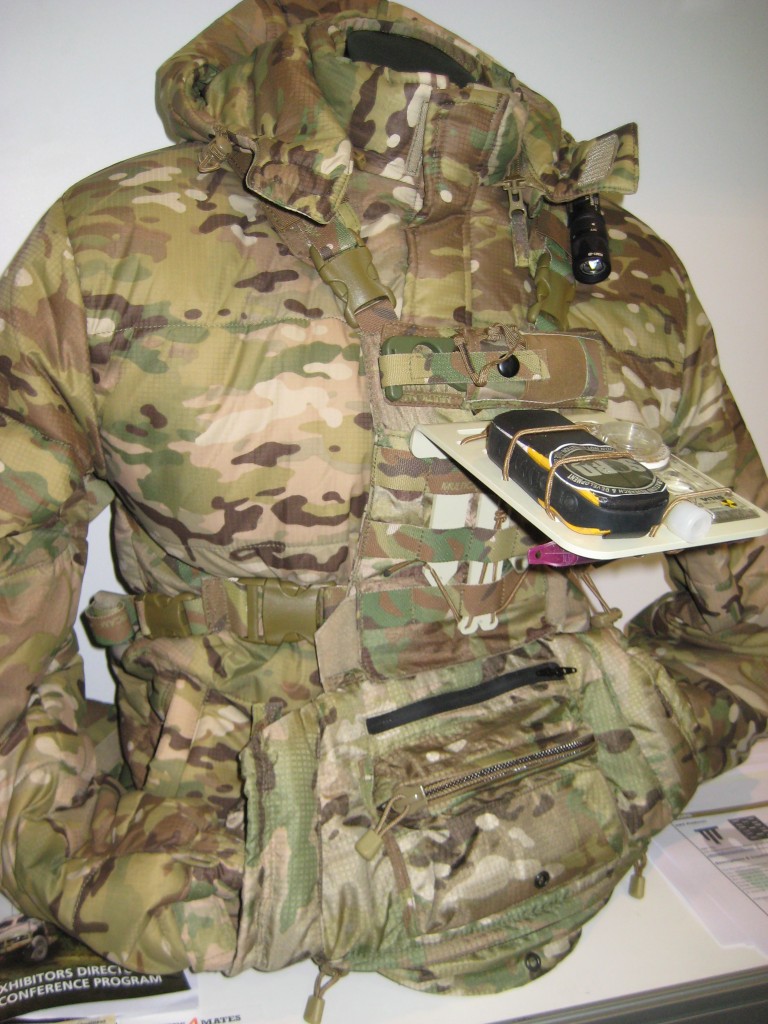
Other items that was discussed with me was:
-
The NAV Platform. A detachable device to allow mounting navigation aids (compass and GPS unit) to the parachute rig. Easily detachable for such everyday activities as attending orders groups and passing on details to team members, and no splinter/shatter for safety, this was a specialist piece of gear that caught my eye. Especially since most of my parachuting has been in bright, day-glo colours with adoring crowds of international backpackers.
-
MOLLE Belt System. A three part belt system, comprising of an trouser belt to hold up one’s pants, and a rigger belt, and a slip-on MOLLE belt sleeve. The MOLLE sleeve is a 3-part contoured fit that has facility to add pouches and holsters with ease.
Inner belt:
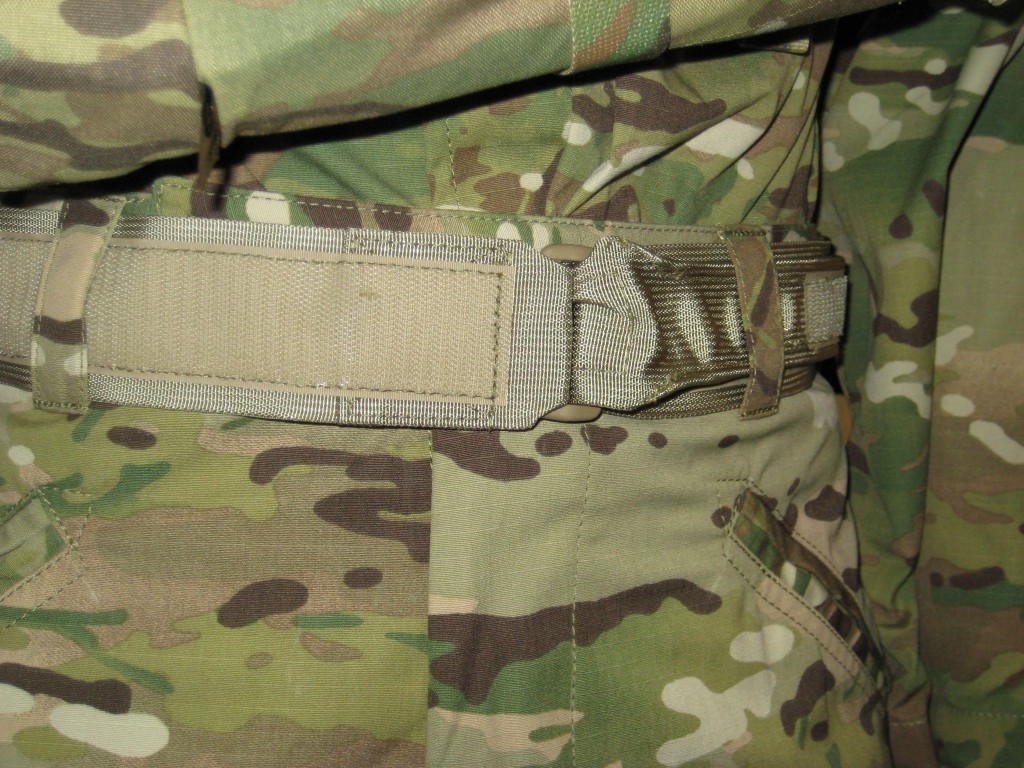
Outer belt being worn:
Outer belt, showing contoured and segmented construction:
-
Dynamic Combat Sling. An adjustable, two-point convertible to a single point sling. Uniquely, it has a floating shoulder pad that allows a very smooth movement of the sling material during movement of the weapon.

Detail of floating shoulder pad:
THALES

Opportunity was taken to examine the new EF-88/F-90 that is about to enter service in the ADF.
After many years of experience, I would suggest this new model of rifle is quite an improvement over the original F-88 family that I grew up with.
Two of the biggest noticeable differences was the huge effort to reduce weight of the weapon empty, without accessories or accoutrements. One of the most noticeable weight saving measures was to flute the barrel. Whilst I’m not a fan of barrel fluting from a manufacturing perspective – it adds an expensive and often unnecessary manufacturing step – the Thales rep had been on the testing/design team and mentioned it was absolutely necessary to achieve the required weight savings.
The other biggest noticeable change to the design is the removal of the quick change barrel feature, which in ADF service was used as a “necessary” means to ensure clearance of the weapon, with attendant wearing of important bearing surfaces and locking lugs between the barrel and receiver group. I like the quick detach barrel feature for ease of cleaning, but thought it somewhat idiotic to remove it for clearance of the weapon. Thankfully, this has now been fixed.
An optics rail, and accessory rails in strategic places aid greatly in strapping on necessary accessories and a much cleaner attachment system for a 40mm grenade launcher is apparent. Unlike the first GLA attachment system with a very large interbar mounted permanently on the barrel, the new model 40mm allows any member of a section to attach this vital section weapon into their rifle with a minimum of fuss. Very impressive to see.
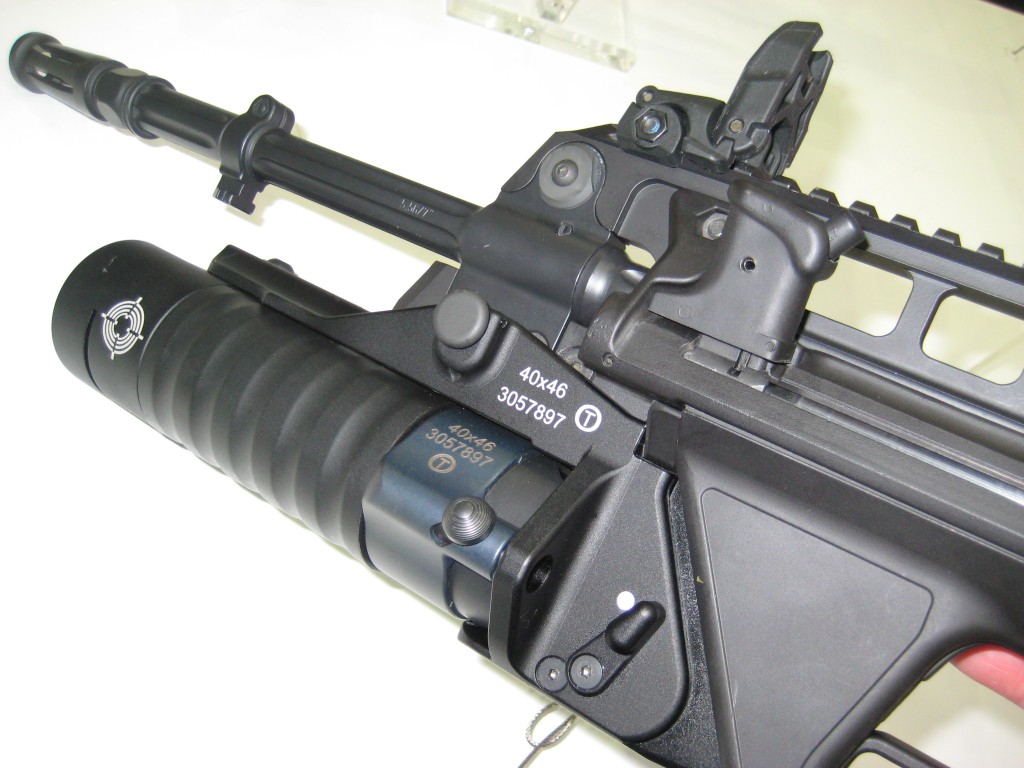
There’s also a expended case deflector that cures one of the biggest bug bears of this bullpup rifle, allowing the weapon to be switch shoulders for short periods, such as that found in certain CQB scenarios. It even allows limited use by kacky-handed operators for short periods, instead of the dedicated left hand bolt.
After only a cursory examination of the new model rifle, I’d be quite happy to take it to war. It’s perhaps not as good ergonomically as the M16/M4 family of weapons in US service, but in many regards, especially in terms of engineering and maintenance (both user operated and armoury level) it’s leaps and bounds ahead. It’s pretty obvious that the last 20 plus years in Australian service has been built upon, and allowed to improvements to be made to the basic design. It was mentioned to me that our build specifications are now different, and quite an improvement upon the original Austrian specifications.
ADA (Australian Defence Apparel)
Unofficial word is that ADA has been awarded the load bearing tender for the Australian Army.
I was able to examine their entry for the Light Sniper Pack.
The story behind this pack was the end-user community was very critical and outright rejected the initial offering from ADA. In a very short space of time, end-users were quickly assembled and were able to offer valid input into a workable pack. This rapid prototyping is unusual for the Australian procurement organs. It’s very pleasing that such an event can occur.
External back view:
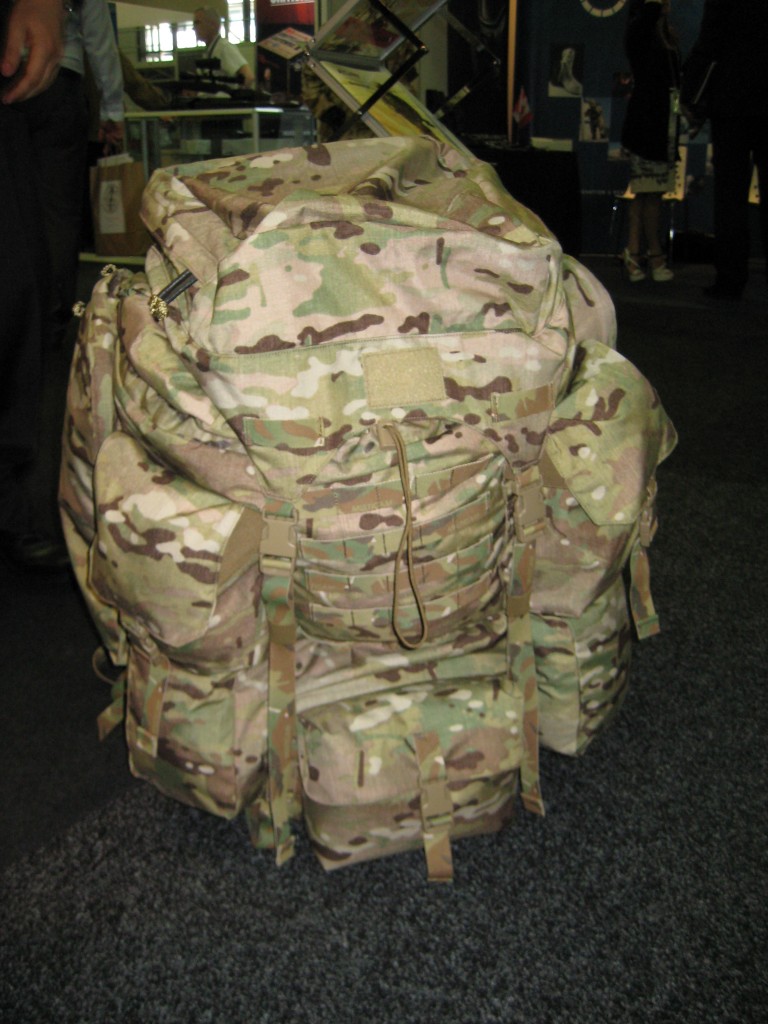
View of harness:
Sleeping bag tunnel being opened:
Sleeping bag tunnel fully opened:
The offerings from ADA is light-years ahead of just about anything I’ve seen from them previously, but it still seems like it needs some final tweaking.
Hopefully, the system will mature under iterative improvement from end-user feedback. So get cracking on RODUM’s when these packs enter service!
DMO
I also had opportunity to call into DMO (Defence Material Organisation), which is responsible for procurement for the ADF, and Diggerworks – essentially responsible for project integration and actually listening to the end-user.
I have been impressed with the strides made by DMO in the last few years. When I was first exposed to that organisation, it was an extremely slow moving, inwardly focussed government organisation, that in my own words, only conducted lazy science. There’s still room for a great deal of improvement, but there is at least from my viewpoint, some evidence real meaningful change made by that organisation.
Although it was noticeable to me, as someone who has spent some significant time in a couple of industries in Research and Development, Quality Assurance and project manager roles, that DMO is still very much in a “pure” scientific application, as opposed to an “applied” scientific application. To the point that some of the projects they’re working on struck me as very well executed designs on paper. But seemed somewhat “unfinished” when it came to the real-world application of that design. This was most apparent with the latest project they seem to be concentrating on: the “load-sharing” concept for load bearing equipment. This is a wonderful move, but the equipment they had on display left me with some trepidation with a few small issues.
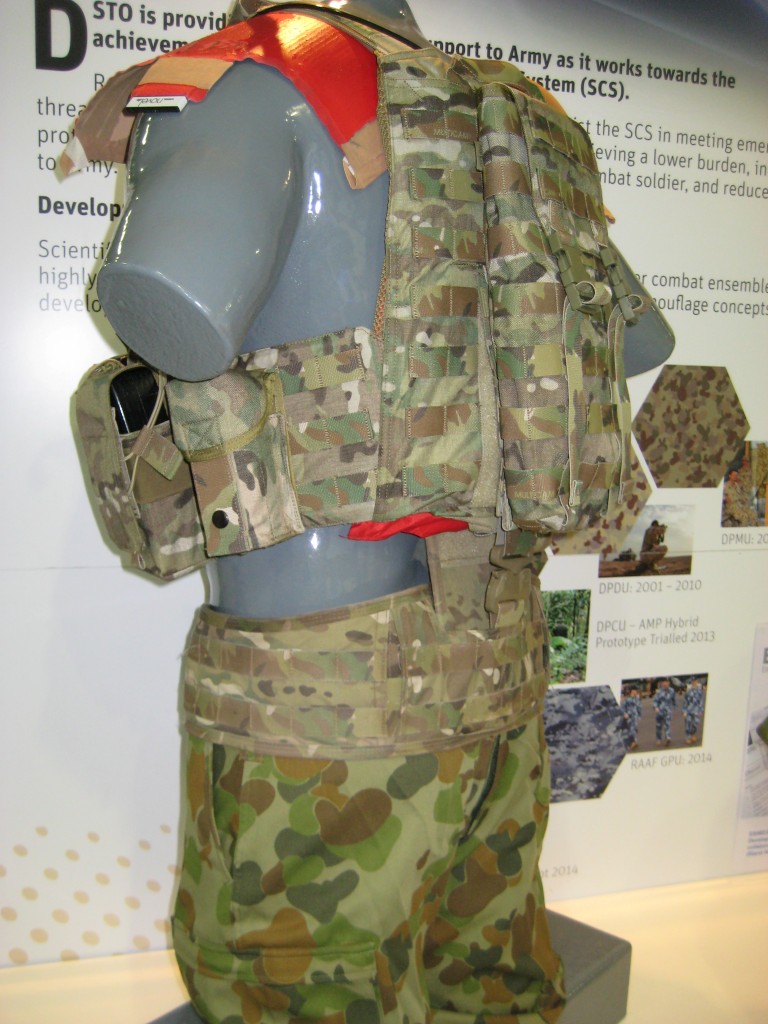
DIGGERWORKS
Opportunity was also taken to visit the team at Diggerworks.
It has been my observation that the Diggerworks project office has achieved some real, sustainable change in the world of soldier systems procurement processes. They were sharing some of the challenges of getting progress of some of their projects in load carriage in the hands of operational units in the ADF. A lot of it is normal barriers to progress inherent in the R&D process. Such things as determining phase-lines on just how much time needs to be spent in product development before finally letting go of the baby into the wider world for production and end-user feedback. It’s actually one of the biggest stumbling blocks in the R&D process in industry.
To be honest, any problems encountered in this R&D process has a great many factors affecting it not just from the product, but from processes, procedures and systems that are emplaced upon the organisation conducting the R&D. So, whilst there may be faults in our procurement agencies (such as DMO in the past), not all of it can be blamed in a finger pointing manner – sometimes, the systems the teams in these operate in are major impediments in and of themselves. The legislative frameworks these organisations have to work under are often not helping the situation.
The big take-away I received from the Diggerworks team though: they need useful, constructive feedback through the RODUM system (for the uninitiated, RODUMS are a feedback system on ADF equipment). Take the time to write them up properly, with correct terminology and useful pictures. A single word description (ie. “its crap”) isn’t going to help anyone! Get onto it team! Make sure you tell all your mates in your unit. This is vital, in order to ensure more usable kit entering service.
Onto other exhibits.
For this show, with the looming Land400 project coming up, there were a few submissions of armoured vehicles present. I’ve already mentioned the submission from BAE.
There were a couple more that grabbed my attention.
One of them was the Italian Centauro wheeled armoured fighting vehicle. This was an impressive looking 8-wheeled vehicle. But there wasn’t much room in the crew compartment, and I was a little concerned about ground clearance.
Now, I know the Italians have a stereotyped reputation for vehicles designed and made by the, for somewhat questionable mechanical reliability, but the Centauro wasn’t helped a great deal in it’s publicity with the obvious attendance of four blokes in mechanics overalls.

The other L400 contender present, that I saw was an entry from General Dynamics. A suitably mean looking front-end, that should have had the flashing red light from KITT and accompanied by David Hassellhoff. The GD demo vehicle was a large car, dictated by the required personnel carriage and the internal volume that passengers wearing combat equipment require.
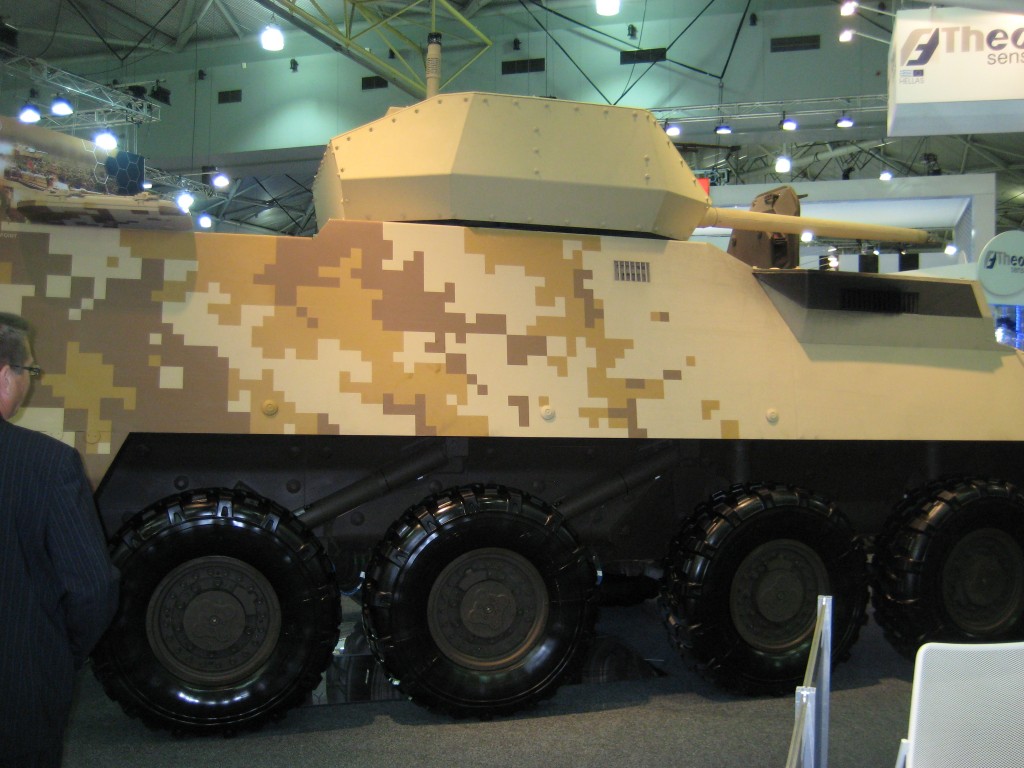
It had a remote operated turret, with the gunner being accommodated under armour in the main compartment, and the whole vehicle had an adjustable suspension system for ride height. In the pictures, one can see that the system is at full (maximum) ride height. It can be dropped by the driver to suit terrain, and dropping the ramp for infantry access.
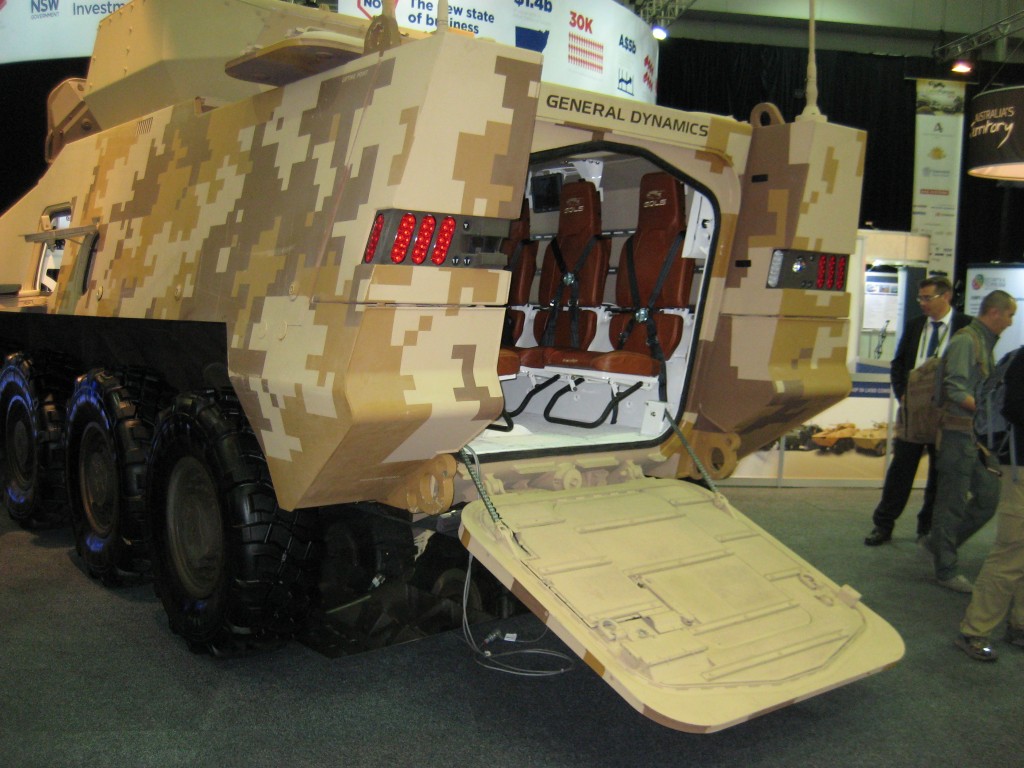
The really interesting things about this vehicle that I was told about by the chief engineer:
-
As a fully functional demonstration vehicle was assembled in under four months with commercial off the shelf components that were lying around the factory. Whilst layout was clearly not for an operational vehicle, this is an impressive effort.
-
The hull was of V-construction to allow increased IED strike survivability. There was some impressive engineering involved in the design.
-
The entire mechanicals of the car were rapid replacement. So, suspension and power pack were quick replacement, very useful for combat damage replacement. The power pack in particular could be changed out in about 1.5 hours. Having spent some of the best years of my life in a Lighthorse Regiment as a recon scout, I could appreciate the time savings for such essential activities.
Other vehicles I was able to examine were light reconnaissance vehicles. The Supacat, which has recently been introduced into service by Special Operations Command was on display.
Now, I’m no expert, but I spent a couple of years shoved into the back of the M113 series APC in a medium reconnaissance role. But there were a few things about the Supacat I didn’t like as a fighting vehicle. I understand WHY it was selected, but there were a few small things that just didn’t grab me. For such a big car, it seemed to lack stowage space. There were a few other funny points in the design that didn’t grab me with my experience working from vehicles.
Frontal three quarter view, with remote weapon station:
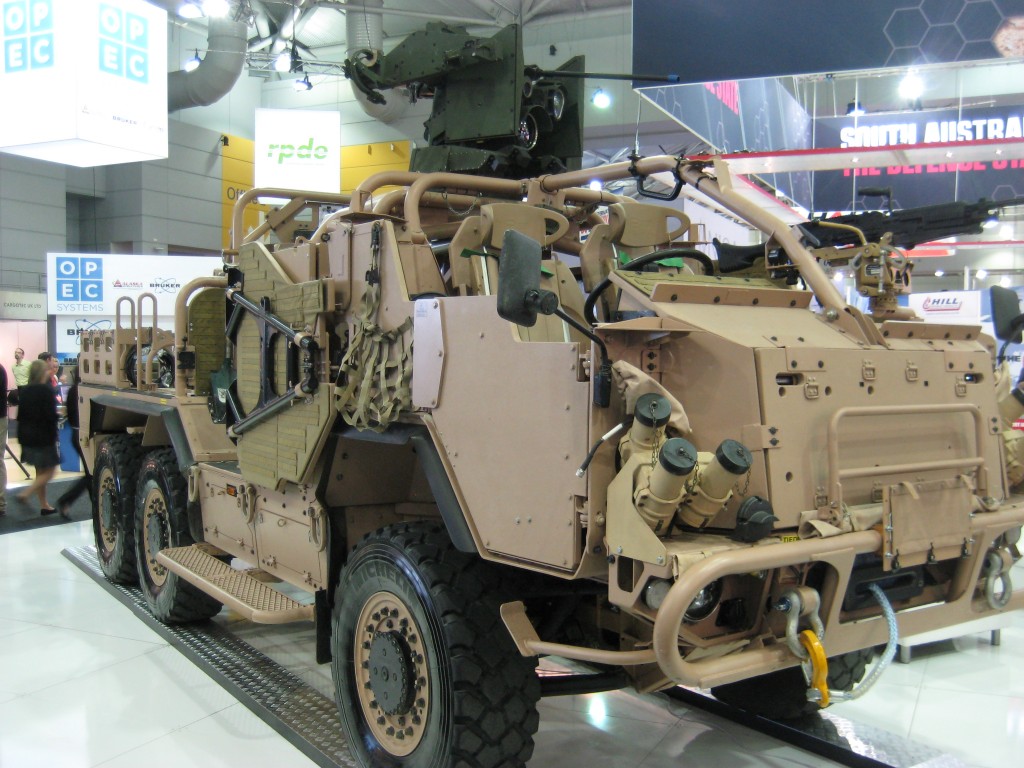
Rear cargo/passenger bay:
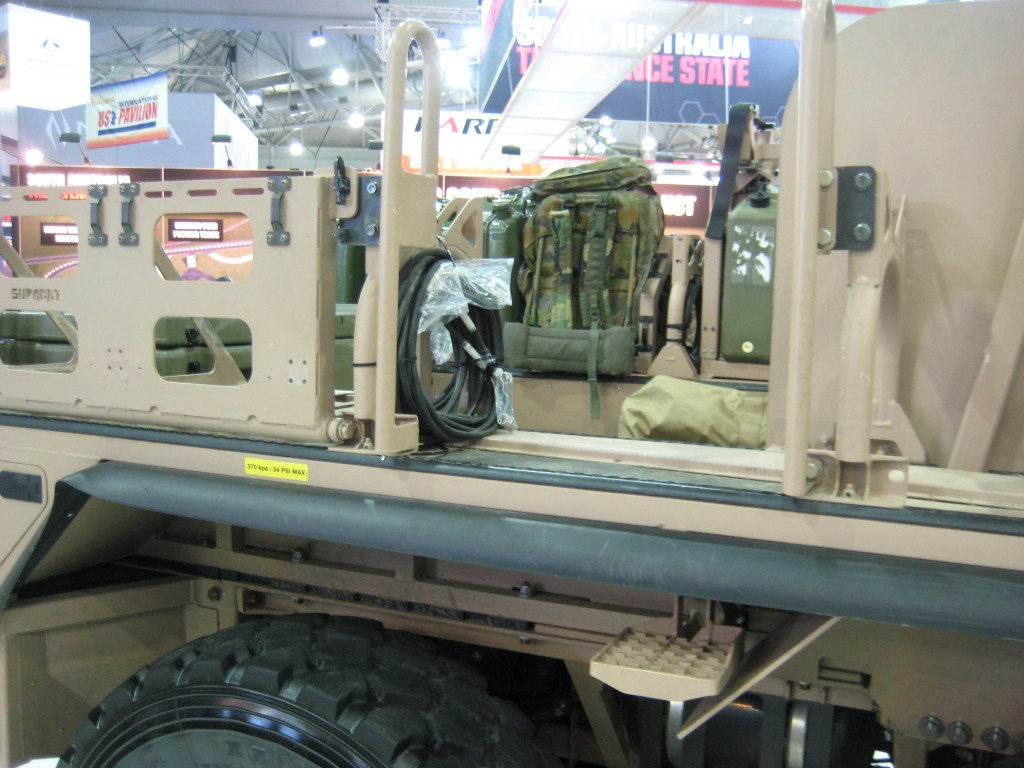
Gunnery station for remote weapon station:
Spare wheel detail:
One vehicle I really liked the look of, was the Volvo light armoured truck that was on display, apparently set-up for a light mounted reconnaissance role. I’d be quite happy to ride in the back of this one. It had far more usable internal volume, that allowed better stowage of mission essential kit and personnel.
Three quarter front view:
Driver’s position:
Driver’s station:
Troop/cargo bay:
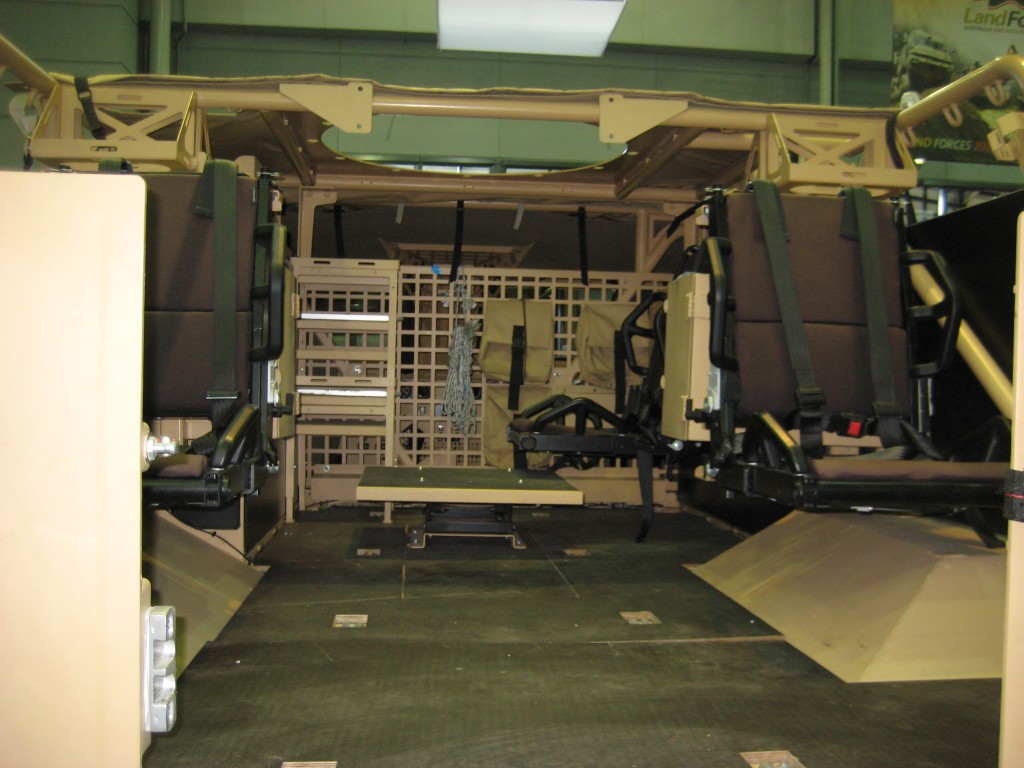
Alright, that’s about me done. Just about everything I can think of that I saw and spoke to others about. Any questions, queries, or doubtful points?
Although to be honest, if you mob want more detail, you’ll have to start thinking about some sort of crowd-funding venture for me to get time off my day-job, in order to pay my bills.
I can only hope this was an enjoyable read!
Posted in Military, Trip Log by 22F with 1 comment.
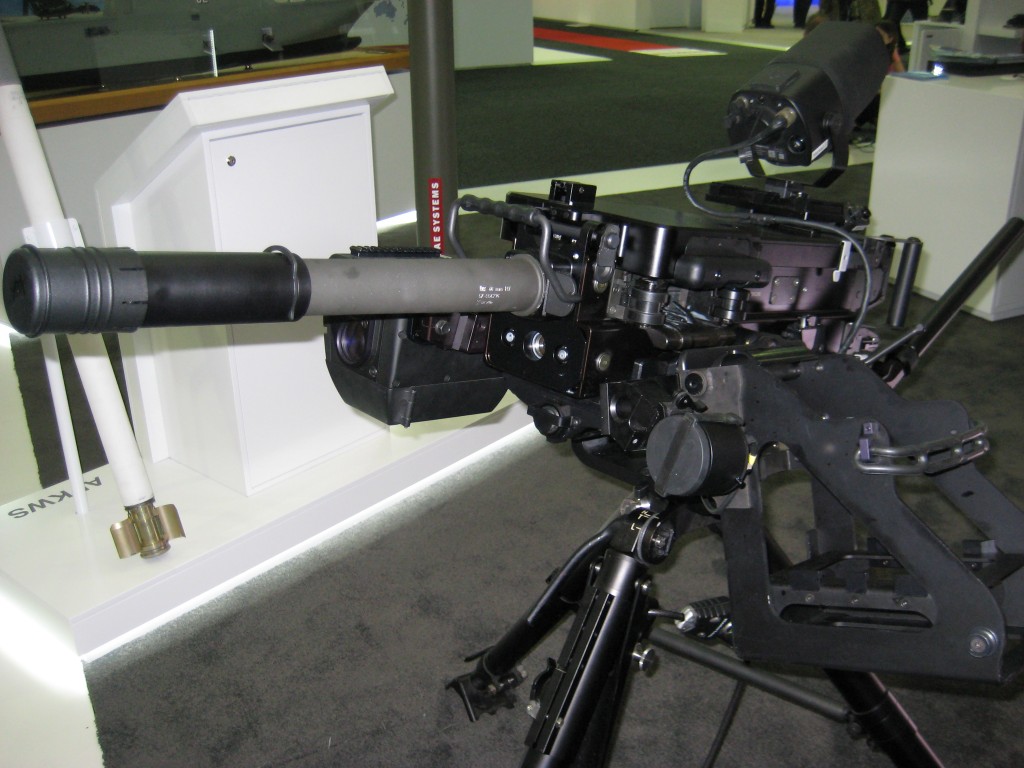
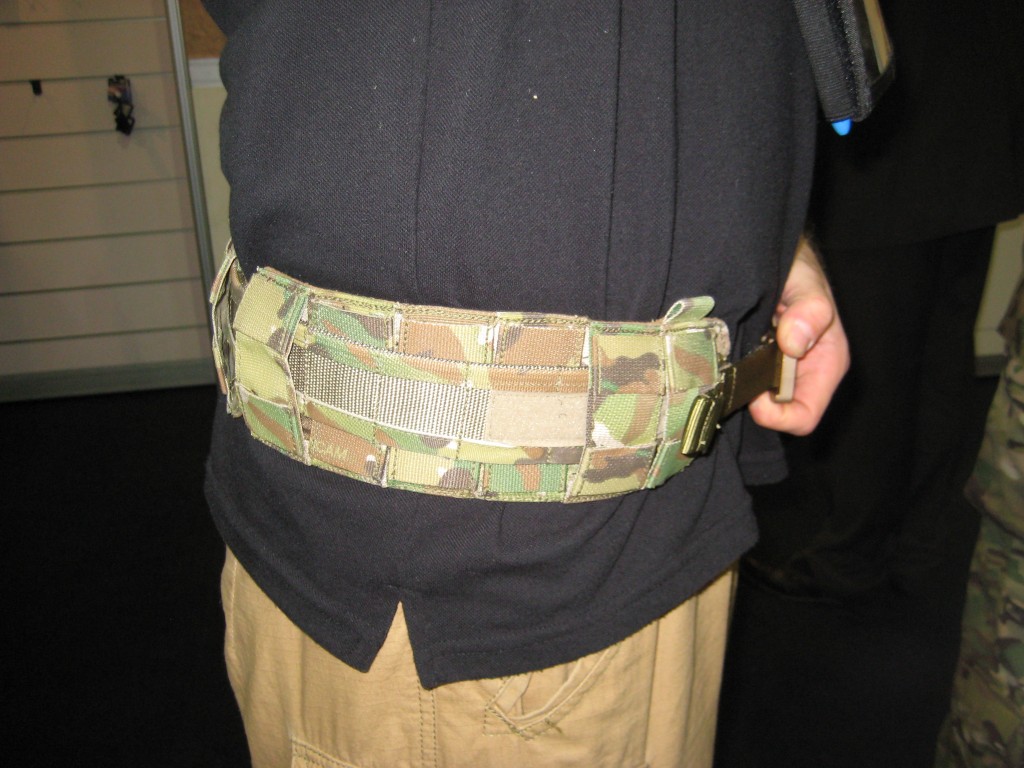
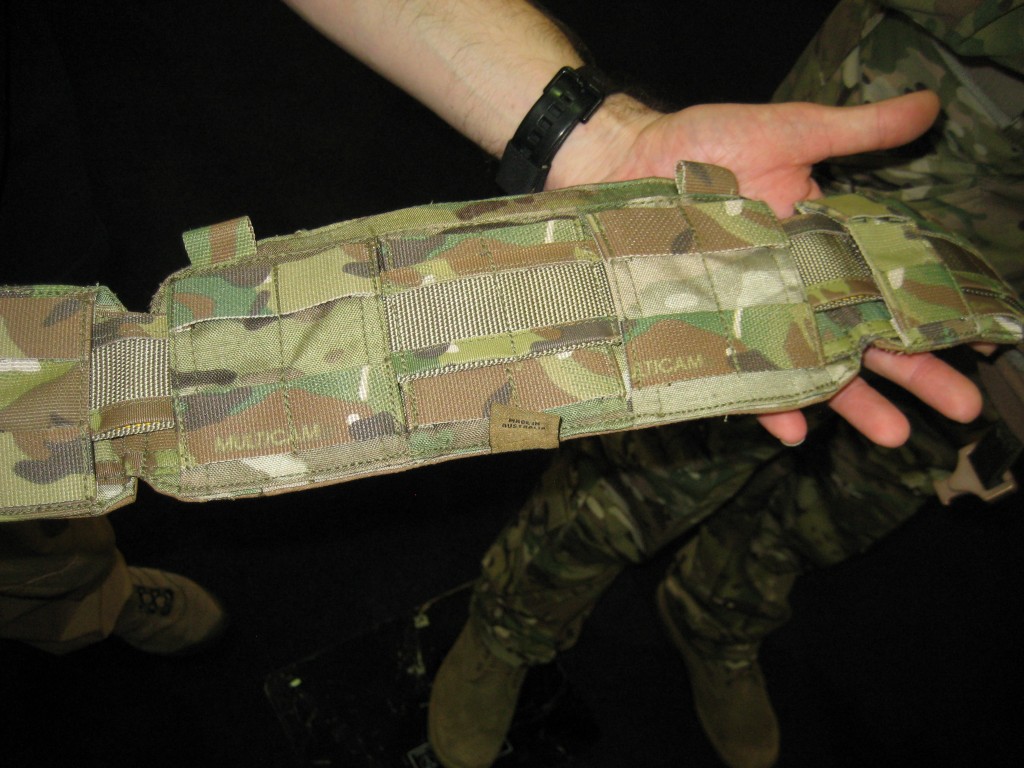
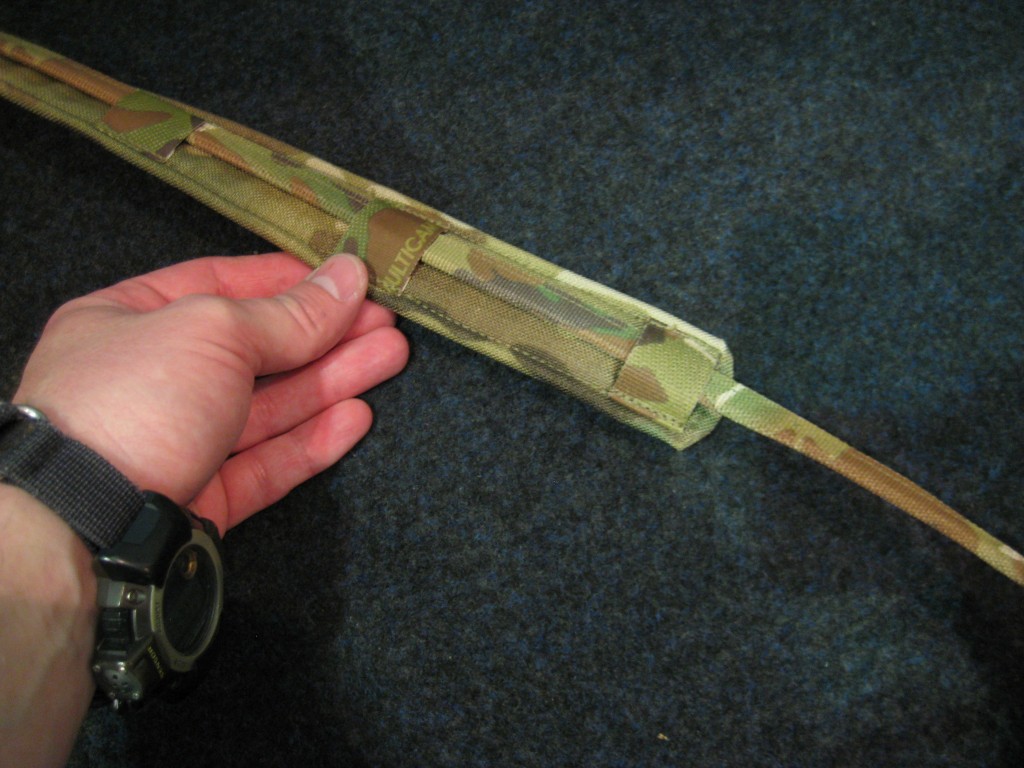
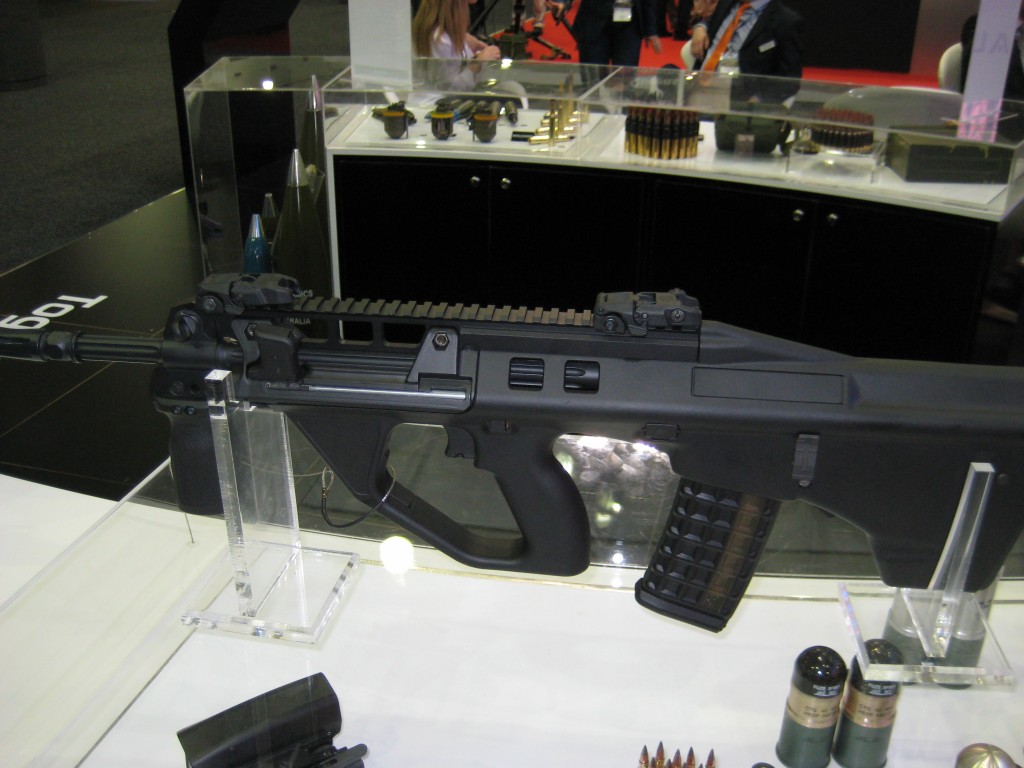
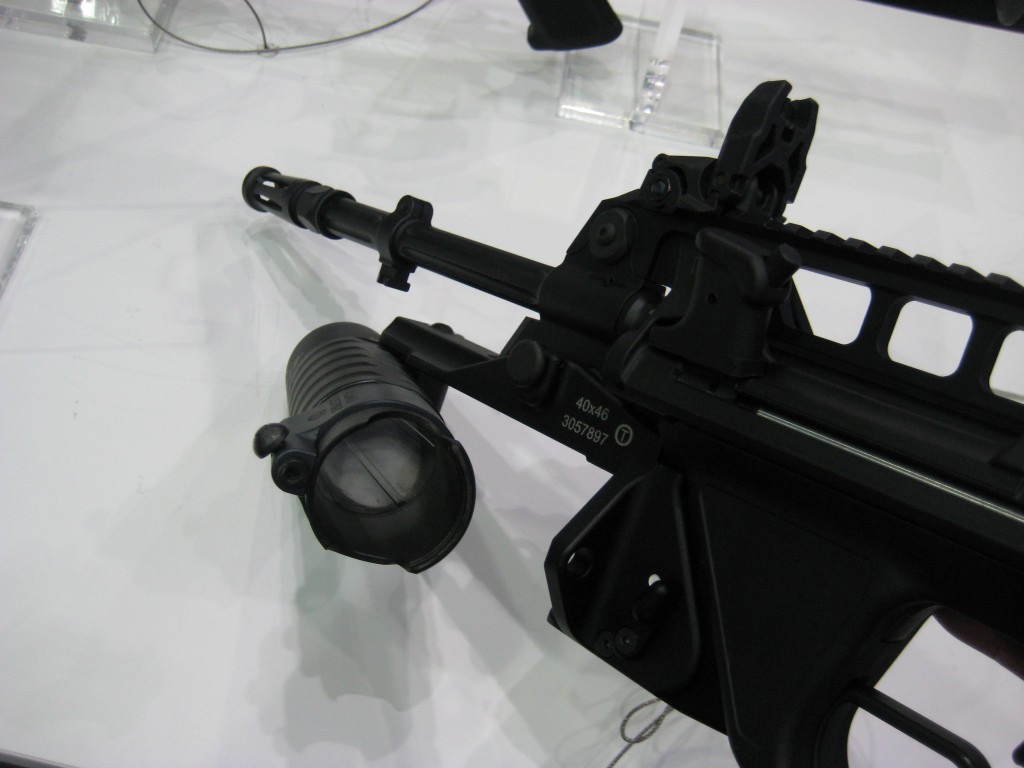
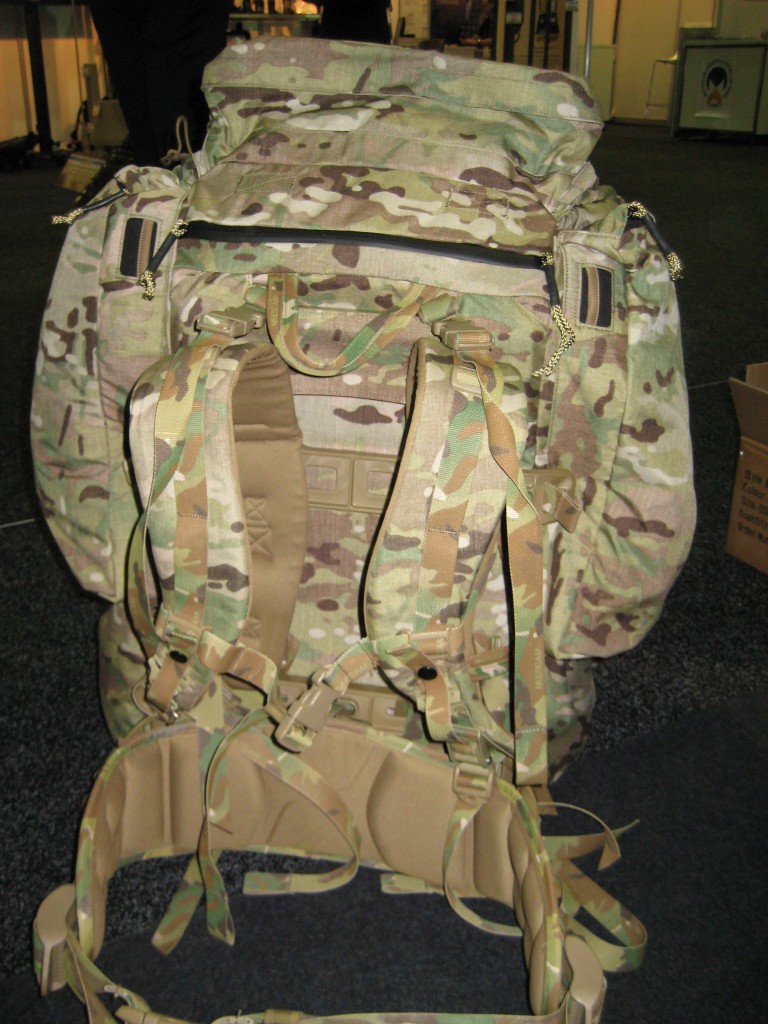
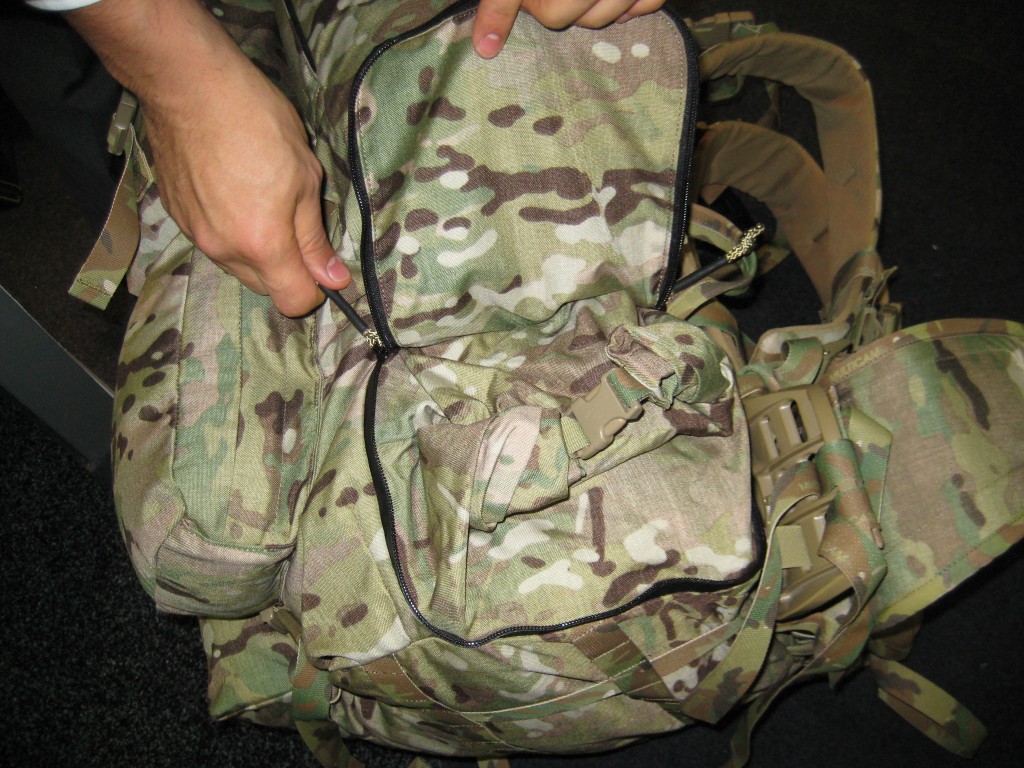
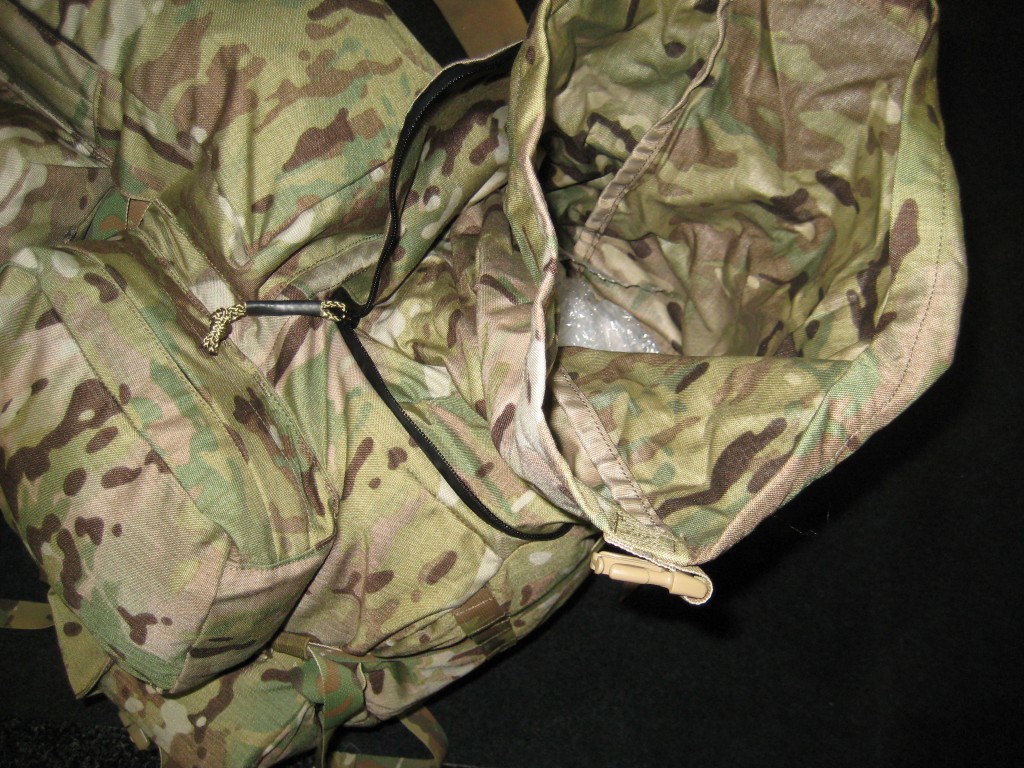

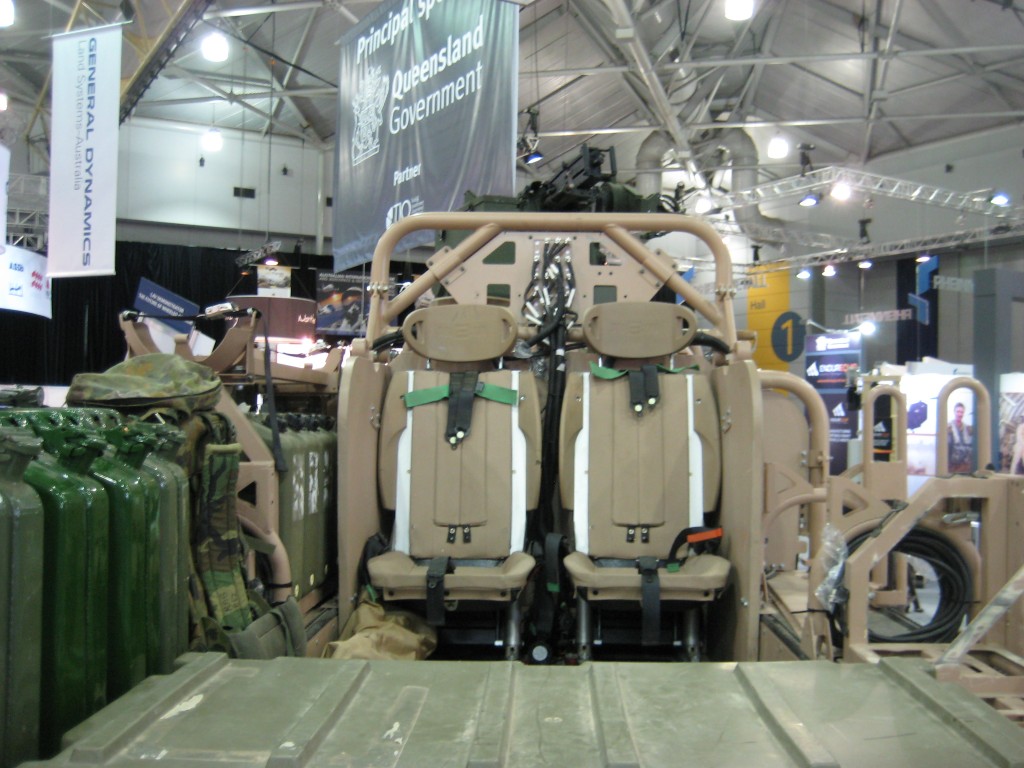
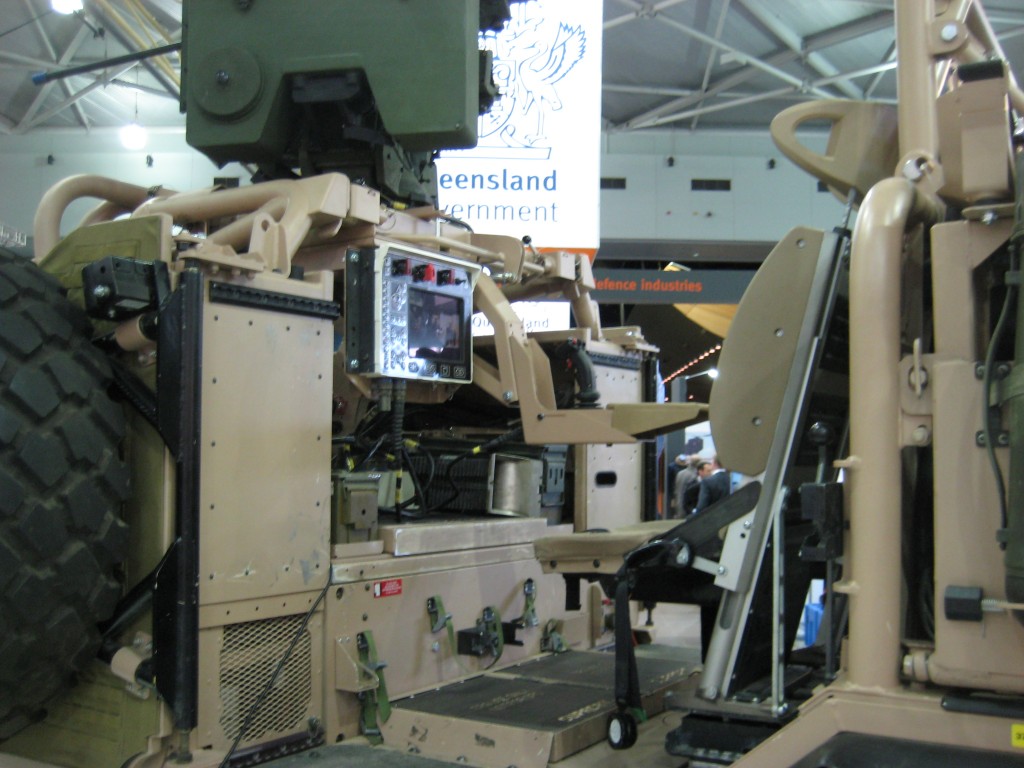
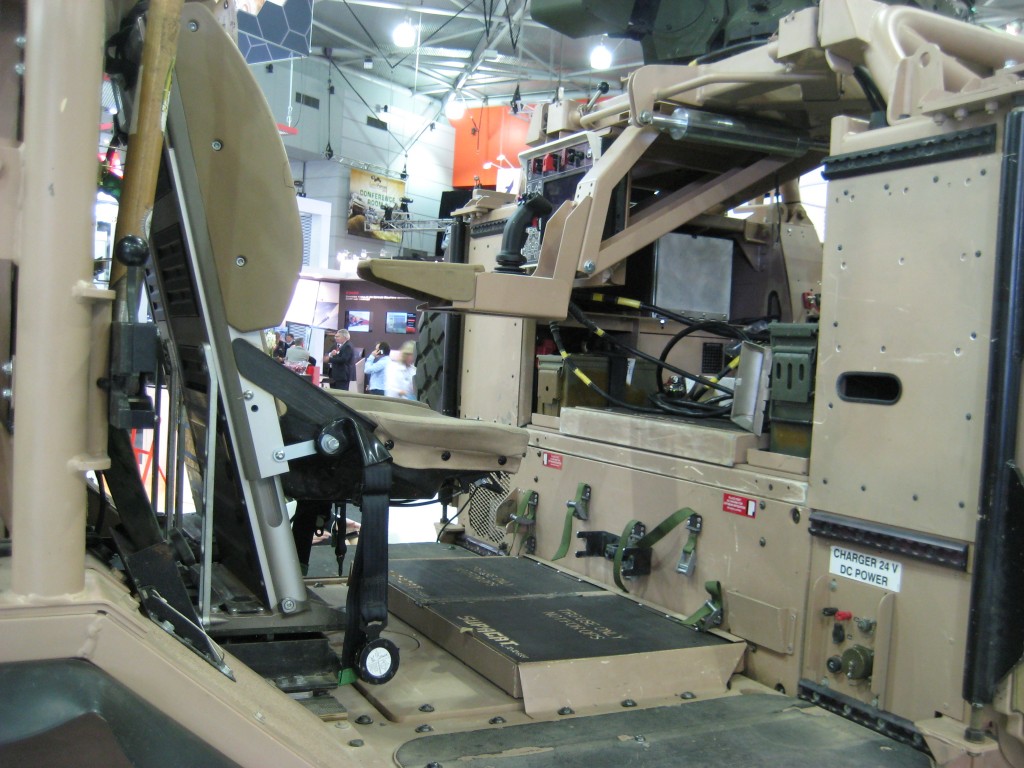
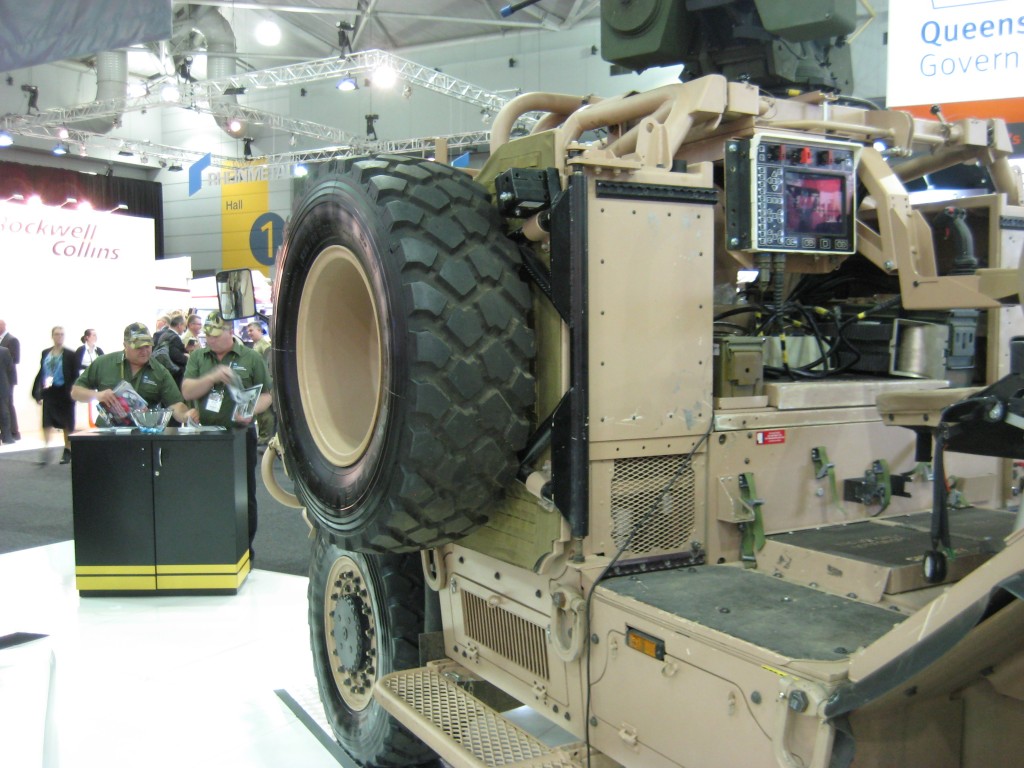
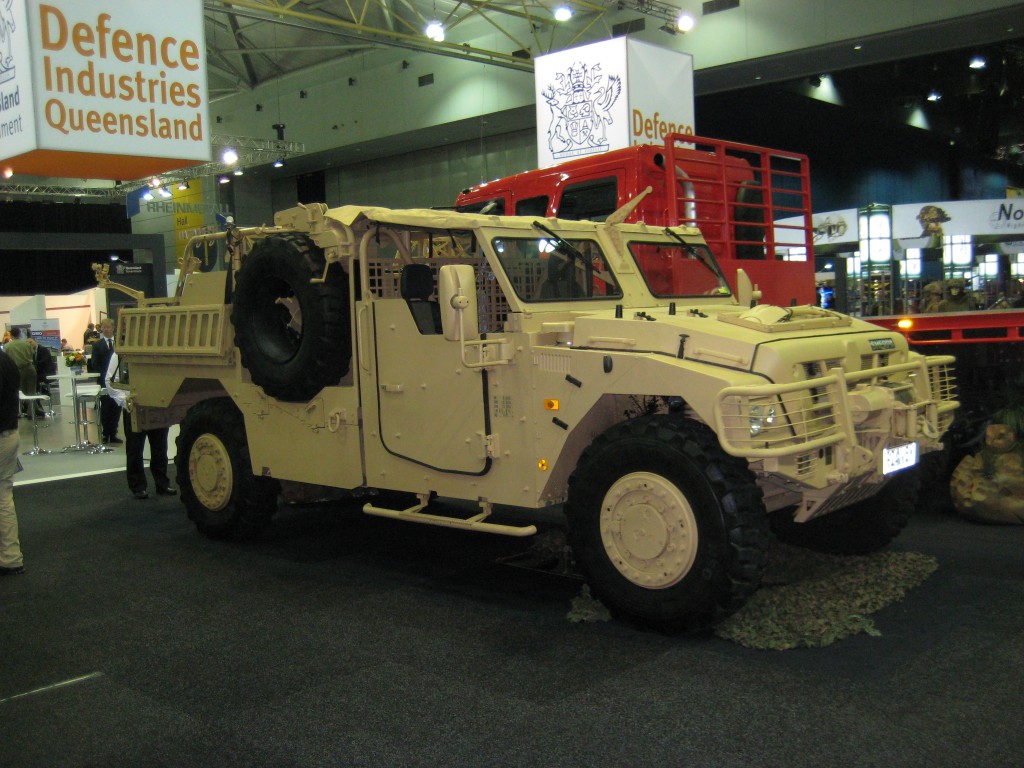
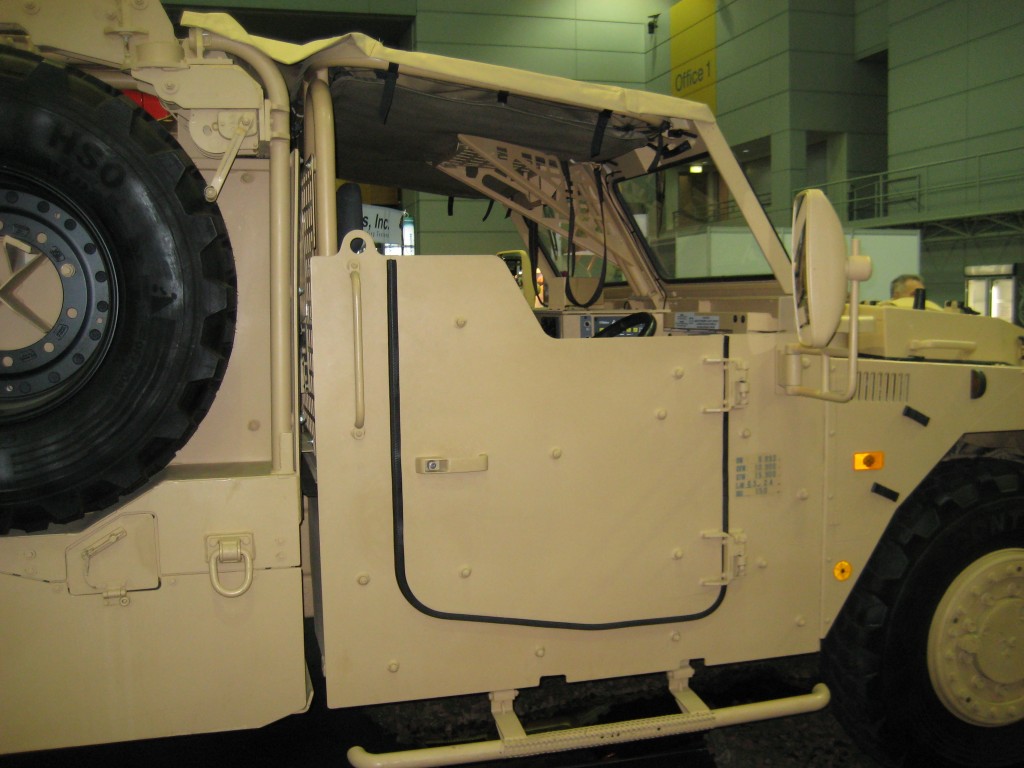
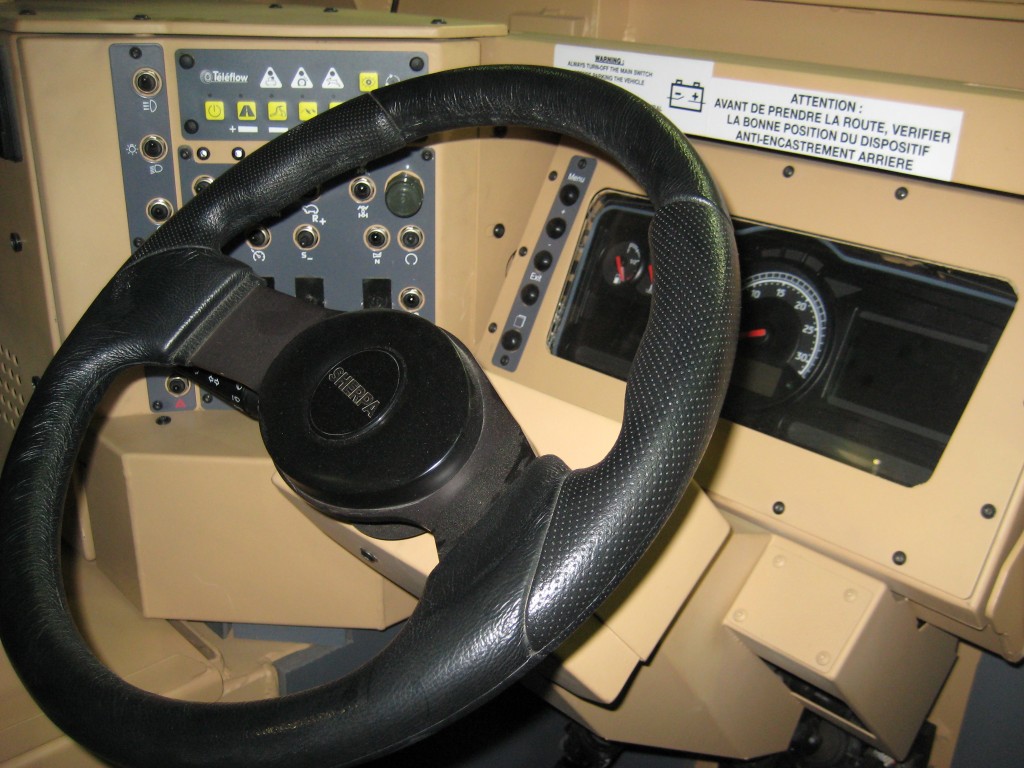
Leave a Reply